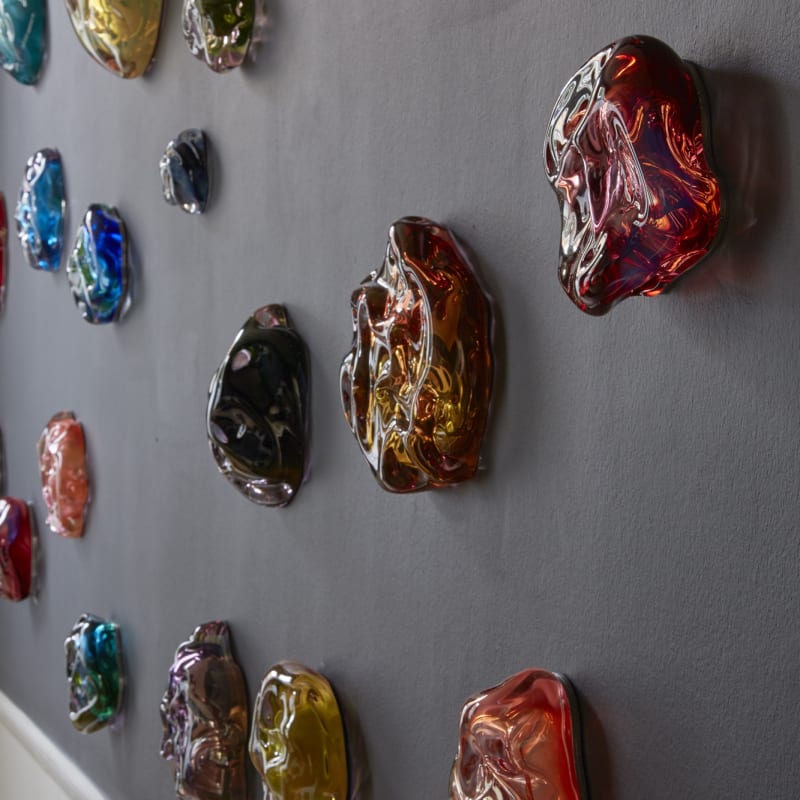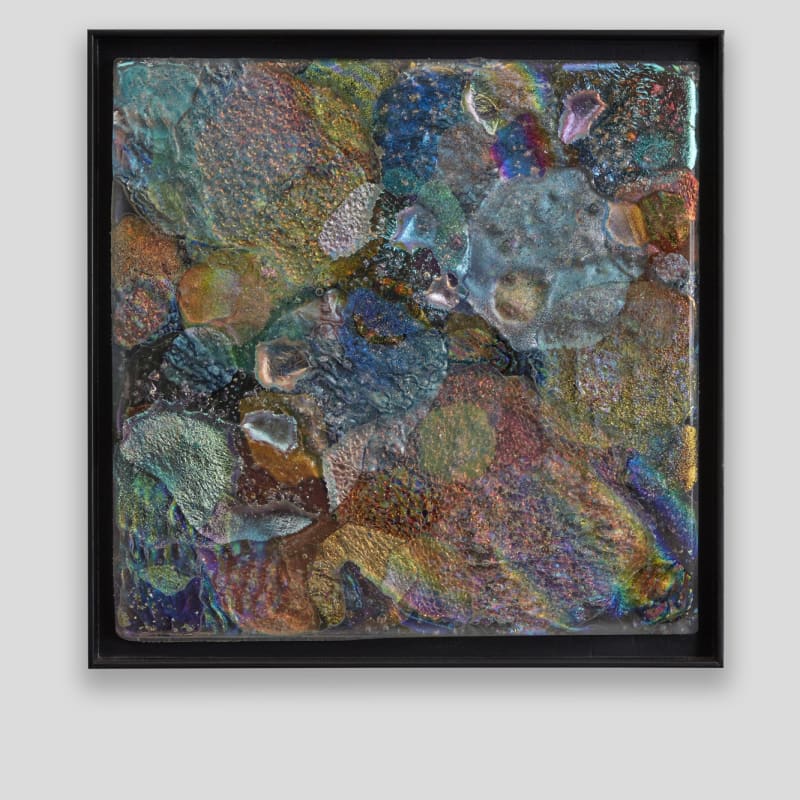Flavie Audi is best known for her glass creations. For her first London solo exhibition, she has used photography, film and her signature glass-works to investigate the points at which the natural and artificial worlds meet.
Often perceived as a natural material, glass is in fact a man-made element, a composite organic material. It both absorbs and reflects light, and exists on the border between absence and presence. Audi’s glass works reflect this enigmatic quality. They are scientific, being based on an understanding of how to manipulate glass, while also being open to chance, as a product of an almost alchemical process.
Glass is omnipresent in the digital world, acting as the interface between the viewer and the virtual world. In Cell-(estial), the visitor passes from one world to the next in two gallery spaces; one room representing the man-made and the virtual; the other embodying the natural, chaotic state. Mirroring each other, two monumental wall installations are the focus of each environment. Cloudscape 8 follows the rational rules of Euclidean perspective and counters the darker Cloudscape 7, a scattered, explosive sea of galactic debris.
Gemscape 1, a wall-mounted sculpture brings together synthetic and natural materials, including fake marble, semi-precious and synthetic stones and resin. This seamless combination invites the viewer to consider the relative merits of each material. In an era of technological innovation that has seen the creation of flawless, synthetic diamonds, undetectable by man or machine, the work questions the definition of ‘real.’
Landscapes of Mass Replication is a video and sound installation created in collaboration with Samantha Lee. The work defines the invented term Cultural Geology: a science, which is linked to human processes; planetary bodies or substances grown or made to create synthetic materials that exhibit properties and behaviors not usually found in nature.
Tristan Hoare and Flavie Audi are grateful to Laetitia Catoir for her help with putting this exhibition together.




